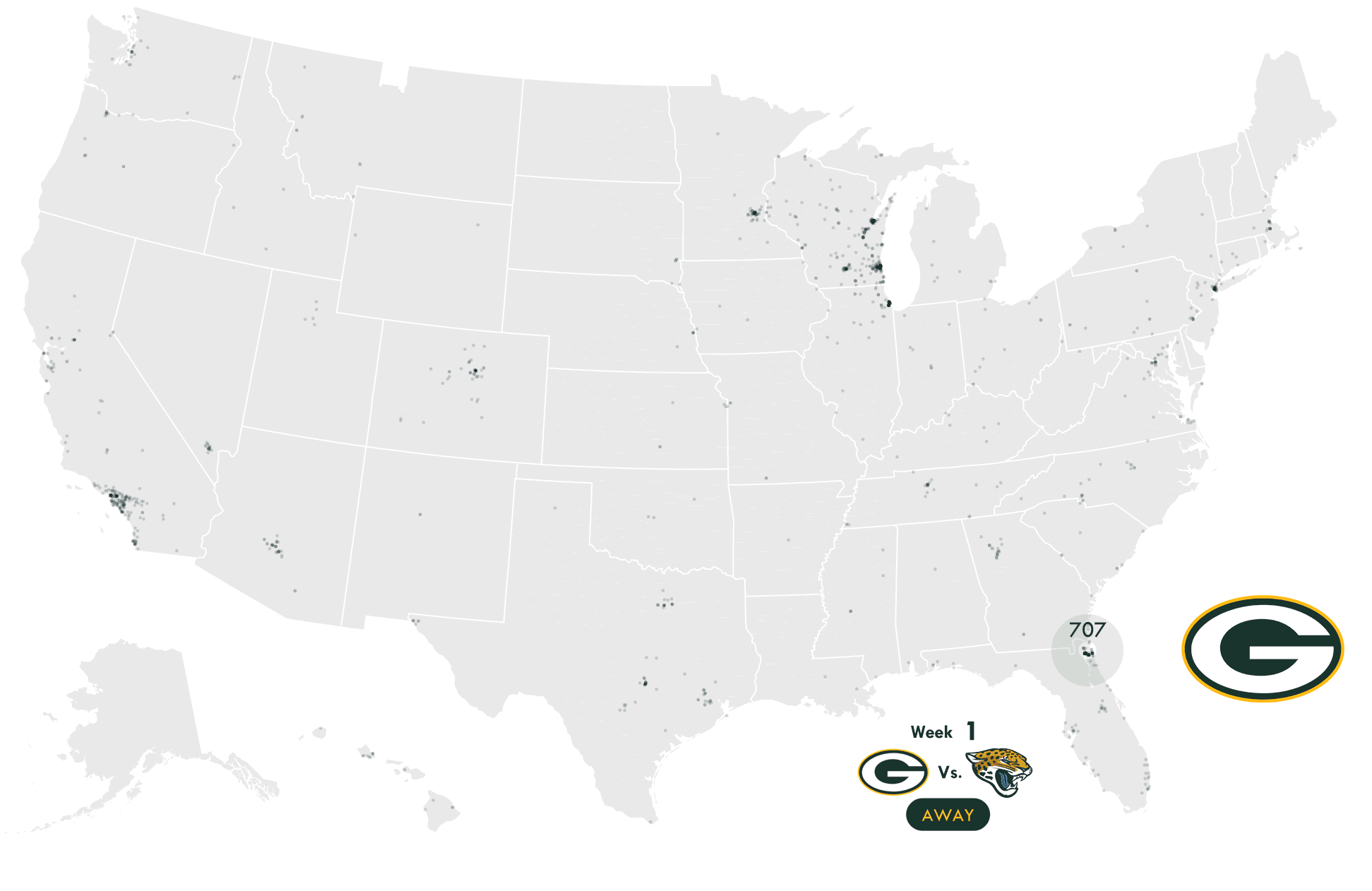3 ways your business can leverage third-party location data
Columnist Aaron Strout dives into NFL fan data and comes away with three ways marketers can think about geotagged data to help them better connect with their customers.

With nearly 80 percent of all social media engagement happening through mobile phones, marketers can now effectively leverage location data when users geotag their social posts. And, with innovative image-recognition technology like Chute and Sysomos Discover (disclosure: client), we also have the capability to recognize and analyze imagery posted on the social web.
While location-based tagging has existed for a while, the existence of more visual data (images and videos) has increased the willingness of mobile users to post and geotag their posts at a much greater volume than in the past.
Back in December, I wrote a post on the Waze Ad Blog talking about marketers using third-party data sources like car-buying day/time trends to power their location-based marketing efforts. This kind of alternative thinking not only promises to provide a leg up on the competition (who restrict themselves to more traditional data sources), but it can also provide new partnership opportunities and marketing insights for forward-thinking companies.
Recently, I challenged the analytics team at my company, W2O Group, to do some proof-of-concept research around NFL fans and whether or not they could infer any interesting data from geotagged fan posts. Not surprisingly, they came up with some interesting insights that led to the inspiration for this article.
And while the NFL season has been in the books for a month now (I am still on cloud nine thanks to my New England Patriots’ miracle finish), it’s a good time for marketers to start thinking about how they can use third-party location data.
Methodology
Using a combination of image-recognition software, geotagged data and social buzz, the W2O Group analytics team determined which NFL fans were “most vocal” online when traveling with their teams to away games. With a focus on social media photo content, the team leveraged Sysomos Discover to analyze Instagram data for the entire 17-week NFL season for all 32 teams, using geotagged image-recognition software to tag every post that contained a team logo.
After identifying over 400,000 logo-tagged Instagram posts (where location was provided), they then figured out the fan’s proximity to the visiting stadium by measuring the photo’s location in respect to the stadium’s coordinates. With this methodology, the team assumed that a fan was either at a game or near the stadium when within a one-mile radius.
They also identified fans who were in the metropolitan area when posting, by identifying posts within a 150-mile radius of the stadium. This allowed a differentiation between fans who were actually at the game and those who potentially live in the area but were rooting for the visiting team (e.g., transplants originally from the visiting team city).
The team then analyzed the cross-section of visiting teams over 17 weeks, which provided us with over 500 data points.
With this data analysis, the analysts established how many visiting fans were posting while traveling with their team at away games. They were also able to identify the stadiums from which visiting fans posted to social media most, which is indicative of stadiums that are most popular among traveling fans. (Spoiler alert: Nice weather helps.)
Additionally, the team accounted for the fact that a football fan may post about an opposing team by reviewing a random sample of the data. They determined that while fans may mention rival teams with text, they typically only post photos of teams/logos that they support.
Results
Best Traveled Team
Surprisingly, Oakland Raiders fans were the loudest online at away games, beating out Green Bay Packers (No. 2) and Seattle Seahawks fans (No. 3). A major reason for this spike was Week 15’s game against the San Diego Chargers. Due to the large Raiders fan base in LA, there were over 1,000 posts from that game alone within a one-mile radius of the stadium.
Raiders fans were also extremely vocal during week one when they traveled to New Orleans, potentially because the game came down to a risky two-point conversion decision by Raiders coach Jack Del Rio. When measuring fan conversation, it’s safe to assume that multiple factors come into play.
As demonstrated by the chart below, Green Bay was a close second, with over 2,300 photos posted by fans on the road, compared with Oakland’s 2,500+. But unlike the Raider fan behavior (heavily skewed by two high-activity games), the Packers fans demonstrated a more consistent level of “noise” while on the road.
Whereas the Raiders experienced a game with over 1,000 posts, the Packers fans were consistently posting between 250 and 375 posts per game, for all eight away games. No more, no less.
Here’s a chart that shows the top 10 fan bases, posting from the stadium while on the road with their team:

Most Visited Stadiums
With location-based data, we can also look at which stadiums were the most visited by opposing teams. Unsurprisingly, weather appeared to be a factor here — stadiums located in sunny, dry climates were visited the most.
Sunny California was home to the top three stadiums, followed by bustling cities like New York, Dallas and Washington, D.C. The chart above shows the top 10 stadiums that were posted from by visiting fan bases, using imagery that matched their team logo.
Knowing how well a team’s fans travel can go a long way in informing mobile targeting of merchandise, tickets and travel packages that should be featured. It also provides insights to teams and the NFL to allow them to give better information to sponsors, which always helps when it comes time to sign new deals or exert leverage.
3 ways to leverage geotagged data
Obviously, not every marketer can benefit from knowing more about NFL fan data, but my hope is to illustrate the art of the possible here. Connecting the dots, here are three ways companies can think about geotagged (particularly visual) data to help them better connect with their customers:
-
Know thy customer: Most companies build personas or representations of their customers to help with targeting on marketing vehicles like websites, mobile apps, email and digital advertising. Most have significant research behind them but tend to be a little one-dimensional and are based on customer buying behavior, a select number of interviews and web visits.
Imagine looking deeper into other interests of your customers based on what and where they post when they are within a certain proximity of your company. This type of data can help discover new partners/partnerships, lead to new locations or better places to advertise.
- Boys against girls: For customers who do geotag posts or content in or around a company’s locations, knowing their age, sex and estimated household income can be helpful when it comes to making decisions about products to feature, ergonomics, store signage, local marketing strategy and so on.
-
Seasonality: If you are keeping tabs on your customers’ (or potential customers’) geotagged data, seasonality can also come into play. As the research above demonstrated, warm weather stadiums have fans that attend and share more. Are there truisms like this for other companies?
Do customers post more in the fall or spring? Are there clues beyond normal customer sales data that could lead to better advertising or in-store product placement?
This is just the tip of the iceberg when it comes to exploring the power of geotagged customer content. And the volume is just going to get bigger. Is your company tapping into this goldmine of data?
Contributing authors are invited to create content for MarTech and are chosen for their expertise and contribution to the search community. Our contributors work under the oversight of the editorial staff and contributions are checked for quality and relevance to our readers. MarTech is owned by Semrush. Contributor was not asked to make any direct or indirect mentions of Semrush. The opinions they express are their own.
Related stories